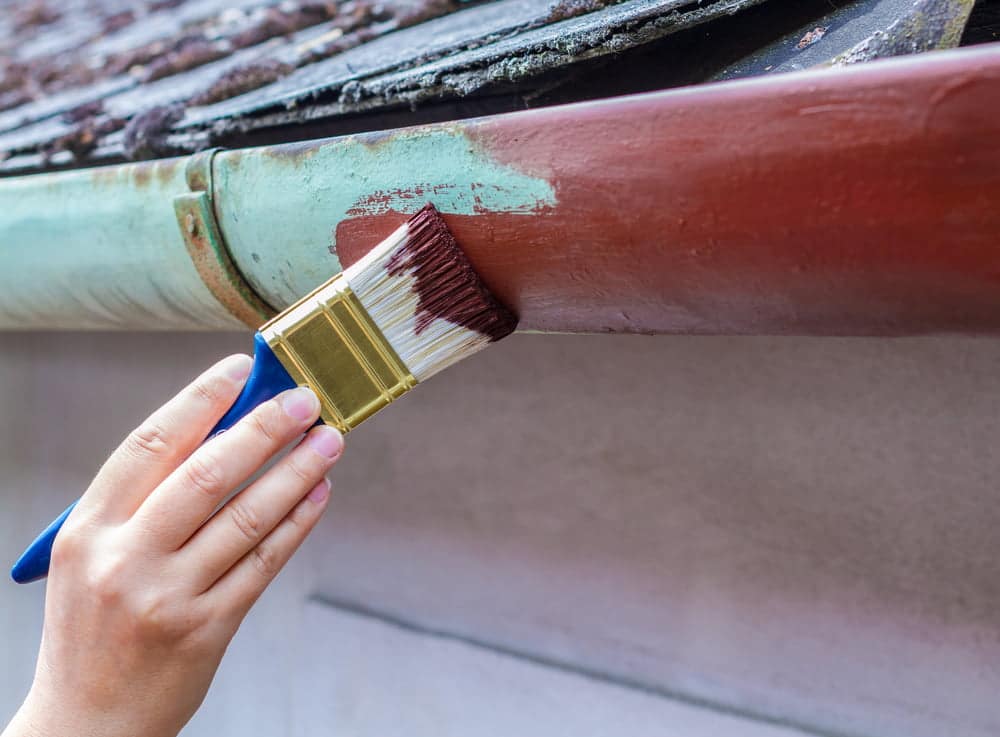Rusty Gutters? How to Repair and Extend Their Lifespan
Rusty gutters are more than just an eyesore—they can lead to leaks, water damage, and even foundation problems if left untreated.
If you’ve noticed rust forming on your gutters, don’t panic. With the right approach, you can repair the damage and extend the life of your gutter system, saving money and protecting your home in the process.
For over a decade, Rescue My Roof has been a leader in the roofing industry. We’ve helped thousands of homeowners achieve their dream roofing solutions. Now, we’re here to help you, too.
In this article, we’ll cover why gutters rust, signs that your gutters are damaged, and gutter repair steps. In the end, you’ll know how to spot gutter damage and what to do.
Why Gutters Rust

Most residential gutters are made of galvanized steel or aluminum. While these materials are designed to resist corrosion, constant exposure to rain, snow, debris, and moisture can eventually take its toll.
Over time, scratches in the protective coating or standing water in clogged gutters can lead to rust spots.
Signs Your Gutters Have Rust Damage
Before rust becomes a major problem, keep an eye out for these warning signs:
- Orange or brown discoloration along the gutter seams or edges
- Flaking paint or bubbling areas on the gutter surface
- Water leaking from rusted holes or weak spots
- Sagging or separating gutter sections
Catching rust early is key to preventing bigger issues down the road.
How to Repair Rusty Gutters
If your gutters are only lightly rusted, you can often fix them with a bit of elbow grease and the right materials.
1. Clean the Area Thoroughly
Use a wire brush to scrub away loose rust, dirt, and debris. Then rinse the gutter with water and allow it to dry completely.
2. Apply a Rust Converter or Primer
A rust converter neutralizes corrosion and prepares the surface for painting. Once applied, allow it to cure according to the product’s directions.
3. Patch Any Holes
For small rust holes, apply a waterproof gutter patch or use roofing cement and a piece of metal flashing to seal the area. Smooth it down and allow it to dry.
4. Repaint the Gutters

Use a high-quality, exterior-grade metal paint to protect the gutter from future rust. Make sure the paint is compatible with galvanized or aluminum surfaces.
When to Replace Instead of Repair
If your gutters are extensively rusted, sagging, or pulling away from the house, repairs might not be enough.
In that case, replacing the damaged sections—or the entire system—could be a smarter long-term investment. Seamless aluminum gutters or rust-resistant copper are great options for longevity and curb appeal.
Tips to Prevent Rust in the Future
Once your gutters are in good shape again, keep them that way with proper maintenance:
- Clean gutters regularly to prevent standing water and debris buildup.
- Check for clogs in downspouts and make sure water flows freely.
- Inspect your gutters each season for scratches, cracks, or peeling paint.
- Consider installing gutter guards to reduce the amount of debris that enters your system.
- Repaint or seal gutters every few years to keep the protective coating intact.
Protecting Your Home
Rusty gutters don’t always mean a full replacement. With some basic repairs and preventative care, you can extend their lifespan and keep your home safe from water damage.
Not sure if your gutters are salvageable? Call a professional for an inspection—because a little maintenance today can save you from major headaches tomorrow.
Learn more with “How to Keep Your Gutters Clear Without Climbing A Ladder” and “Hidden Dangers of Neglecting Your Gutters.”
Are you facing frustrating gutter problems? Rescue My Roof can help. Contact us today to get a free estimate.


